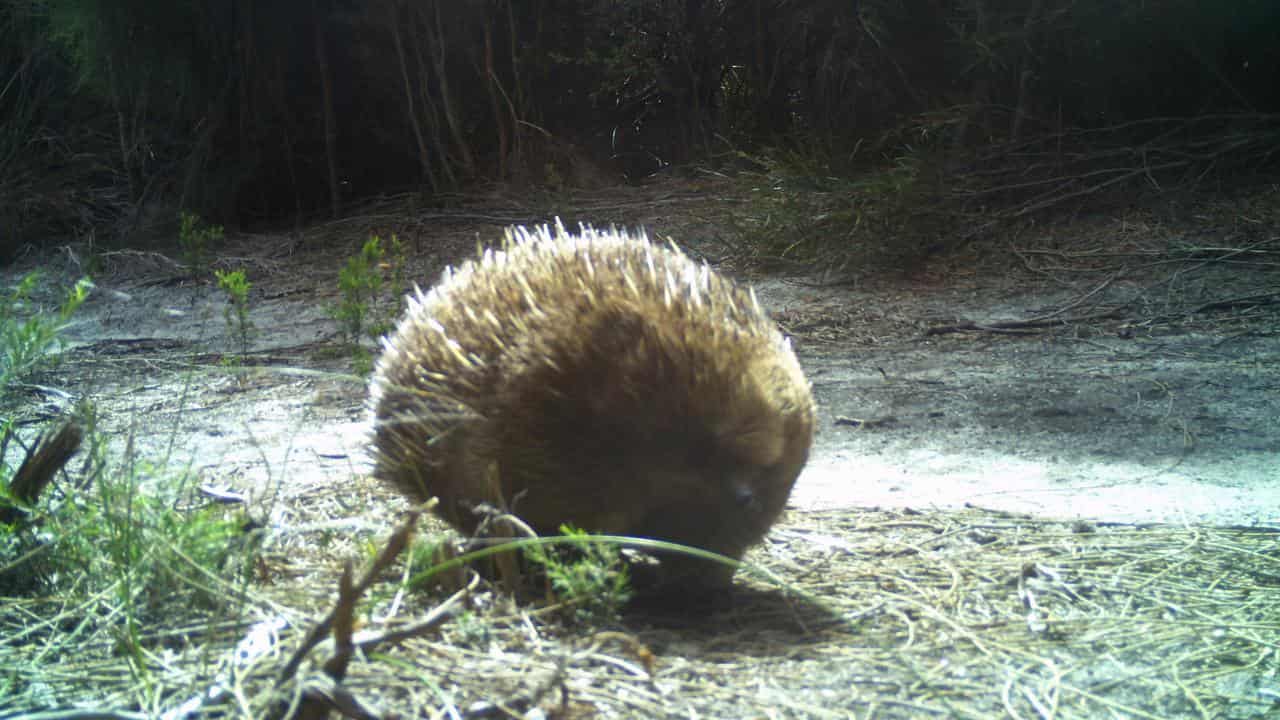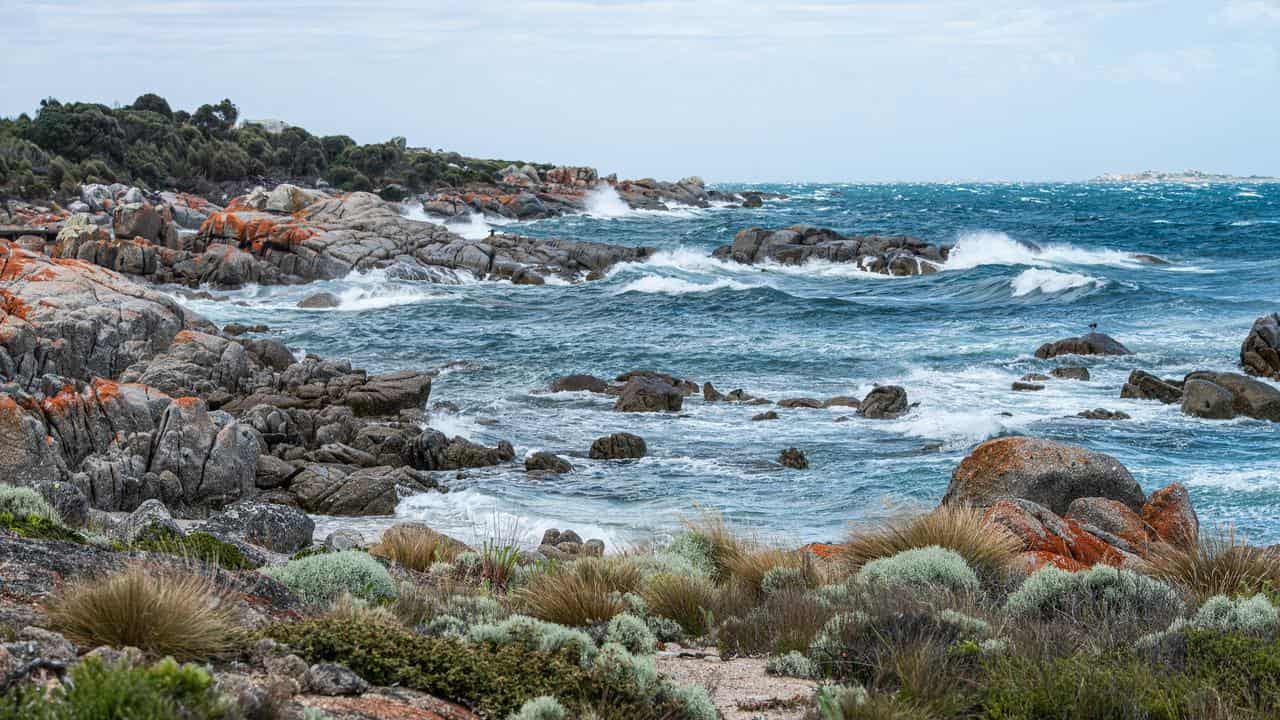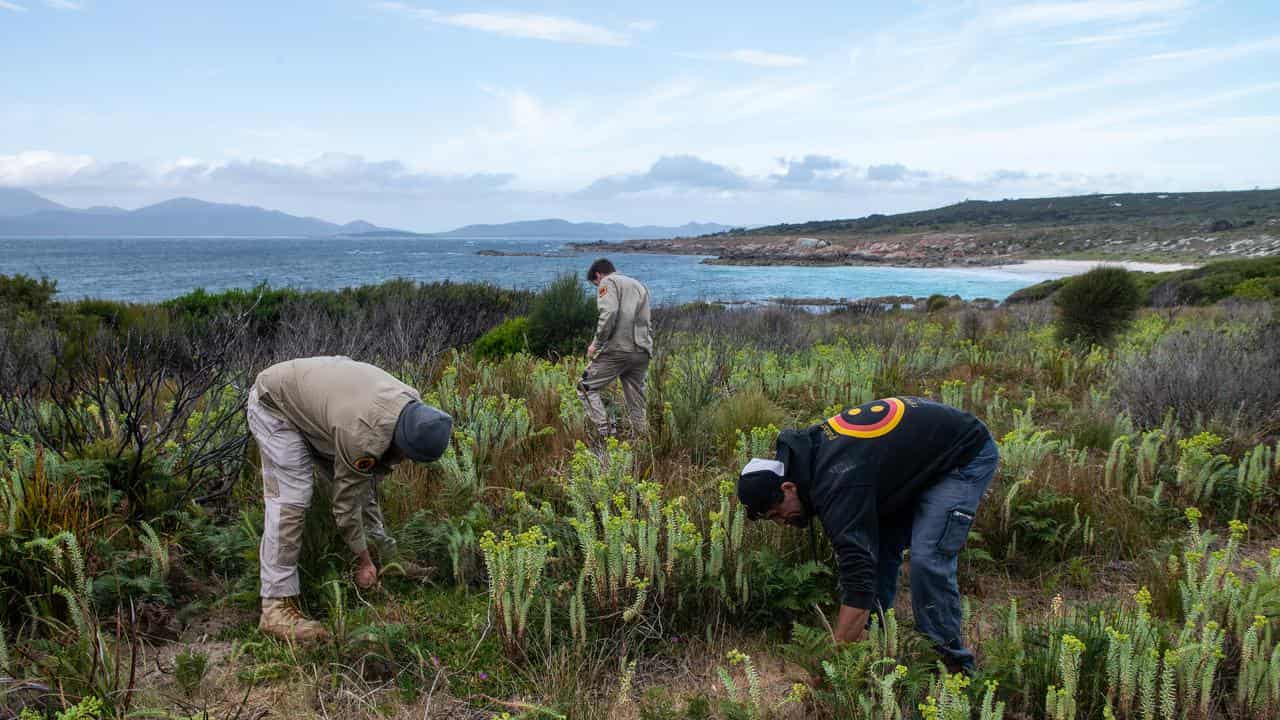
After a devastating bushfire in 2014, the Pakana Rangers thought Lungtalanana was mostly devoid of life.
Then an echidna was captured on a camera set up to monitor wildlife on Clarke Island off Tasmania's coast, sending them "through the roof happy" according to ranger supervisor Kulai Sculthorpe.
"It's a great win for us to see that there's more diversity than we thought and there is surviving animals from that horrible fire in 2014," he told AAP.
An echidna had not been seen on the island for decades, with the impacts of colonisation wiping out most native species on Lungtalanana.

Farmers had cleared land for sheep and cattle pastures, while cats released on the island preyed on animals and birds.
Traditional owners were prevented from conducting important practices like cultural burning, leading to severe bushfires that impacted the remaining ecosystem.
The Pakana Rangers are undertaking a cultural restoration project on the islandthat includes cultural burning practices, surveying the landscape to get an idea of the animals and health of the island, and returning native species.
The Tasmanian Aboriginal Centre wants to return a range of species to the island, including the Bennett’s wallaby, long-nosed potoroo and the Bass Strait Islands wombat.
Mr Sculthorpe said the trimanya (echidna in palawa kani) will be integral to the island's restoration.
"He's just so important because of the crucial part he is going to play in reviving, turning the soil - the cultural restoration project wouldn't work without these little animals doing their role," he said.
"This little guy is going to be very crucial and it also gives us hope as a community to know that what we want to do is achievable."
Lutruwita (Tasmania) has its own subspecies of echidna, which is hairier than its counterparts in the northern regions of Australia.
The Pakana Rangers have contacted a scientist to find out if the animal captured on camera on Lungtalanana is a subspecies unique to the island.
The rangers will also work to determine if other echidnas live on the island.

The restoration of Lungtalanana and return of native species is being supported by the World Wide Fund for Nature-Australia.
“Lungtalanana demonstrates that returning species of cultural importance to Traditional Owners, and restoring the ecosystem, are fundamentally entwined. They work hand in hand,” the organisation's rewilding program manager Rob Brewster said.
Ultimately, Mr Sculthorpe said the restoration project will help to revitalise Country, and cultural practice on Lungtalanana.
"We want to try to create a cultural landscape in a sense, where the animals are all doing their roles and this balances the landscape," he said.
"Also it's somewhere we as an Aboriginal community can go that is healthy Country, doing cultural practices, diving, foraging, all that stuff."




